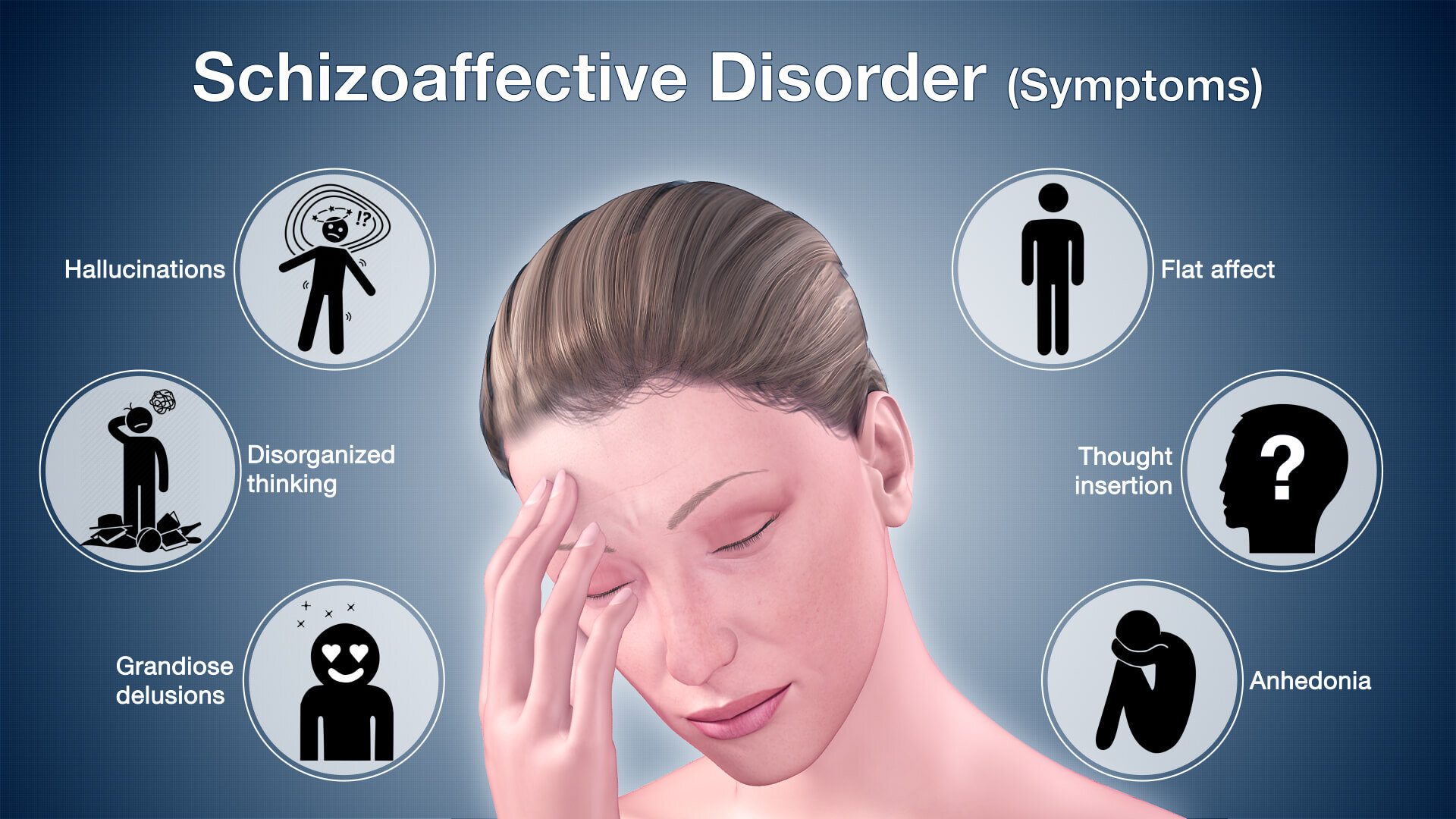Schizoaffective disorder is a mental health disorder that is marked by a combination of schizophrenia symptoms, such as hallucinations or delusions, and mood disorder symptoms, such as depression or mania. The two types of schizoaffective disorder are Bipolar type and Depressive type. Bipolar type includes episodes of mania and sometimes major depression while depressive type includes only major depressive episodes. Untreated schizoaffective may lead to problems functioning at work, at school and in social situations, causing loneliness and trouble holding down a job or attending school. People with schizoaffective disorder may need assistance and support with daily functioning.
Schizoaffective disorder symptoms may vary from person to person. People with the condition experience psychotic symptoms, such as hallucinations or delusions, as well as symptoms of a mood disorder. Although the development and course of schizoaffective may vary, defining features include a major mood episode and at least a two-week period of psychotic symptoms when a major mood episode is not present. Signs and symptoms depend on the type — bipolar or depressive type — and may include, delusions, hallucinations, impaired communication and speech, bizarre or unusual behavior, feeling empty, sad or worthless, and problems with managing personal care.

The exact causes of schizoaffective disorder are still being investigated. However, genetics are likely a factor. Factors that increase the risk of developing this disorder include having a close blood relative, stressful events that may trigger symptoms, and taking mind-altering drugs. The most effective treatment for includes a combination of therapy and medication. The types of therapies recommended through evidence-based studies for this condition are individual counseling, group therapy, and family or relationship counseling. The medications commonly prescribed for this condition include antipsychotic medication that helps treat symptoms like delusions and hallucinations, mood stabilizers such as lithium, and antidepressants. Atypical antipsychotics and paliperidone can also be used in this treatment. APA
